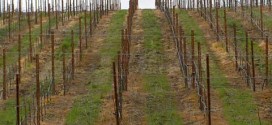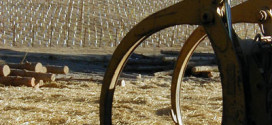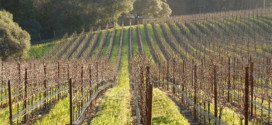To the Sonoma County Permit and Resource Management Department, July, 2002
July 9, 2002
Scott Briggs
Project Manager of the Sonoma County General Plan Update Project
Sonoma County Permit and Resource Management Department
2550 Ventura Avenue
Santa Rosa, CA 95403
Sonoma County General Plan 2020 Citizens Advisory Committee
Re: Conversions of Forest Land
Of the options presented the Committee by staff at the June 20, 2002 meeting, only Option 3 affords the minimum protection for the vast majority of forest ecosystem left in the county. For TPZ (Timber Protection Zone) land, policy in the present plan restricts the use of the land to the growing and harvesting of timber and compatible uses approved by the County in return for tax assessment benefits. The TPZ forest lands are effectively protected by the tax consequences of having to change the zoning and reimbursing those tax savings enjoyed by the land owner during the period of TPZ zoning.
This small bit of protection would not be applied with the other options to the over 75% of the county’s forest that lie within RRD zoning (Resource and Rural Development Land use Category). The loophole that is now being used by the interests that seek conversion of redwood forestland has remained dormant in the present plan until now. Economic changes have now awakened this threat. Available and inexpensive land for vineyard expansion has become more difficult to find in valley and traditional agricultural areas. Certain varieties of expensive varietals have been imported to thrive in cooler, wetter, coastal forest soils. The timber removed during clear cutting helps finance the conversion. Allowing conversion will only add fuel to these pressures.
Option 2 will only afford protection to those lands already in TPZ zoning and does nothing to address the demise of forest and timber land in the RRD zoning. With 75% of the remaining forestland in RRD this would be a tragic loss of opportunity to make forest policy with any nod to sustainability.
Option 4 again only addresses those lands in TPZ zoning and leaves RRD zoning with no protections other than a flawed CDF review process that does not require a full EIR review with its emphasis on cumulative impacts. Some might have you believe that even if you do allow conversion of forestland that the process is well monitored. Review of any of these applications will reveal that the bare minimum of facts and data are included, cumulative impacts of all the projects nearby are not addressed, and comments such as the one from an applicant that cutting the forest for vineyards should be considered a “crop rotation.” Please review my letter in the June 20 packet for reasons that the present environmental review for conversions is woefully inadequate to reveal the whole picture of their potential effect. This option will also cause an unnecessary bureaucratic nightmare with endless amounts of county manpower and money expended to review applications. Decisions on these possible discretionary permits will made by a small group of individuals that will be subject to intense lobbying by commercial interests and the political pressure of the day.
Option 1 offers no change in the current approach. This is clearly unacceptable because it is this approach that caused this need for clarification of intent of the General Plan in the first place. Economic conditions have changed and these pressures for conversions are new. This along with Option 4 allows review on a project-by project basis. This might be initially appealing as a compromise position but will continue to lead to bureaucratic gridlock and do nothing to answer the qualitative question that confronts the CAC, that is, will we uphold the present intent of the goals for RRD and TPZ land use policy and truly protect timberlands?
Could not the CAC recommend policy language that would prohibit conversion of timberland by commercial interests but allow mitigated projects that can be shown to be in the public trusts interest? This would allow, for instance, a project such as a water reservoir project to serve county residents.
One of the troubling assumptions in the work by the CAC on the conversion of “timber lands” issue seems to be hinged on semantics. The object of these conversion pressures is severely minimalized by calling it “timber” land. This commodification of a infinitely complex forest ecosystem lies at the base of why this debate might ultimately fail to address the threat these conversions present. There seems to be a renewed emphasis on making sustainability be at the core of the updated plan. Limiting the debate on the protection to be afforded the forests and watersheds of the county to a narrow focus on only effects on the commercial timberland base will weaken any effort to produce effective protections. The field of view as to the potential effects of these conversions should be widened to include
- Biotic resources
- Increased demands for infrastructure if the conversions proceed and/or if they fail and more residential development takes its place
- Effects from loss of not only redwood and conifer forest but complex oak woodland habitat
- Water quality and groundwater availability
- Microclimate effects and their relation to global warming
- Transportation infrastructure costs due to increased vehicular traffic
- Sustainabilty issues in resource management
- Etc.
The scope of the policy debate must be widened for it to ultimately produce a product that will preserve and enforce the already existing over all goal of its natural resource land use policy. This is stated in Section 2.8 on page 52 of the current General Plan.
“The purpose of natural resource land use policy is to protect lands used for timber, geothermal, and mineral resource production and for natural resource conservation….The intent is that natural resources areas be managed and conserved and that production activities avoid depletion and promote replenishment of renewable resources.”
The five agency North Coast Watershed Assessment Plan (NCWAP) and the EPA’s TMDL (Total Mass Daily Load) data acquisition and analysis produced so far points to many in stream impairments and continuing sediment production from roads and unsustainable logging activity. One of the main findings is that there are low summer flows. Central to the survival of endangered Steelhead is the maintenance of these flows for low temperatures, refugia, and oxygen levels. Coho salmon have not been seen in the Gualala River for the past few years. They most likely have been extirpated from this watershed. They are more vulnerable to high temperatures. The “tipping points” of many species beyond just the Coho may have already been reached. Most data supports the assertion that the biodiversity of the coastal watersheds is continuing to be assaulted by our contribution to loss of habitat.
Much time and energy has been expended by these agencies and private groups to assemble baseline data and assess the present state of the watershed. Allowing deforestation before there is a complete picture of where the watershed and associated biodiversity is headed would be turning our back on our responsibility as stewards of this resource. One old adage goes that if you have something that is broken for some reason, you never throw away any of the parts. In this case the forest is pretty much the whole set of parts.
Of all the products of forests, water is the most precious. Vineyards are permanent and highly destructive to a watershed’s ability to produce water quantity and quality. With wine vineyards being virtual biological deserts compared to a functioning forest, the forest’s value cannot be underestimated as to our continued survival. There is no doubt that agriculture in this county must be supported and encouraged to continue with its success. There exist many protections for agriculture within the Plan in agricultural zoning designations. Those should continue. There might even be new additions to be considered that could direct this desire to plant more vineyards, but in more sustainable directions. However, permanent deforestation with is disastrous potential consequences for forested watersheds cannot be a price we are willing to pay what rewards the public trust might receive.
Please use Option 3 as the baseline for policy formulation to address the forest land conversion issue.
Sincerely,
Chris Poehlmann
Coastal Forest Alliance
P.O. Box 61
Annapolis, California 95412
 Friends of Gualala River Protecting the Gualala River watershed and the species living within it
Friends of Gualala River Protecting the Gualala River watershed and the species living within it


